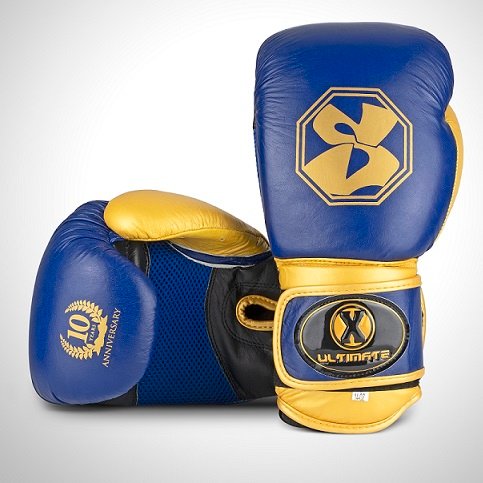
How Do Fighters Gain Weight After Weigh-Ins?

If you’ve been paying attention to the UFC or boxing, you’ll see fighters cut up to 20lbs of weight before a fight. They lose all that weight, but put it all back on before they fight.
How is this possible? What methods do fighters use to gain weight after weigh-ins? How do boxers lose so much weight for competitions? And what do wrestlers do to get strong again after losing 10-20% of their mass?
Let’s look at the hidden world of weight cuts, water weight, and weigh-ins!

Understanding Transient Weight
I can’t tell you anything about how boxers gain weight after weigh-ins, if I don’t tell you about transient weight.
This is the term used to refer to the weight of your body that isn’t your body. This includes things like water weight stored in fat and muscles, the food in your gut, and other things that come and go.
These are where most of the weight cut comes from during a fighter’s weight loss diet. They reduce the amount of transient weight they’re holding down to the absolute bare minimum. What we’re about to see is how dangerous, effective, and severe these weight cuts can be.
The main thing to remember is that fighters gain weight back after weigh ins. It was already there before, so it’s much easier to put back on, with the body being desperate for more water, carbs, salts, and other “missing” weight!
The Weight Cut
Aside from just losing fat, fighters and boxers gain weight after a weigh-in using these transient weight methods. These are typically around water manipulation, but also other forms of transient weight like carbohydrates in the body, intestinal mass, and more.
Some athletes have severe weight cuts – which leave them 10s of pounds below their starting – or normal – weight. This involves cutting out a lot of transient weight and putting it back on in the time between weigh in and competition. In boxing and some MMA organisations, 24-hour weigh-ins give athletes a whole day to replenish their weight, letting them take severe weight cuts.
The Dangers Of Weight Cuts In Combat Sports
Some athletes wear this weight loss in their faces and physiques. ONE FC’s Yang Jian Bing actually died during a severe weight cut. Boxing’s many cases of CTE (a degenerative brain disease) are thought to be linked to dehydration and accelerated cell death.
UFC’s double champ and twitter warrior Conor McGregor looked almost skeletal during his appearance for Fight Night Boston at 145lbs, and other champions like Max Holloway and Khabib Nurmagomedov have seen major health impacts like brain neurological complications and kidney/liver damage.
Remember that this is not new weight gain after a weigh in, but a replenishing of weight from before!
Water Manipulation
Water manipulation is how most boxers make weight – and it’s why they can gain weight after their weigh-ins. When losing transient weight, fighters and boxers can gain weight quickly again because they’re just replenishing what they’ve lost.
This weight is “easy come, easy go” in the grand scheme of things. Elite athletes can lose water weight in time for a weigh-in, then “load” it back in with a number of interesting techniques to soak up all the water and other forms of weight.
Disclaimer: while these practices are performed in competitors, we are not condoning their use. Extreme water manipulation is a dangerous process that can have short- and long-term effects. Consult a doctor or specialist, registered dietitian for any personal dietary concerns.

Water Loading
Water loading is when boxers make weight using a cycle of over-drinking and then under-drinking. What happens is they drink lots of water in the lead-up to a competition to prepare the body, increasing urination at a balanced level.
Then, when cutting down on water intake closer to a weigh-in, the body is still urinating excessively. This leads to water weight loss, and lasts a while, even as water intake is low.
This mild-to-moderate dehydration technique is the first and easiest way to cut down water weight and then rapidly fill it up again after a weigh-in! Boxers lose water then regain it, since it’s the easiest weight to lose and gain in a short space of time.
Carbs
Reducing or eliminating carbohydrates from the diet is another way that fighters lose weight and then gain weight after a weigh-in. Reducing carb intake lowers muscle glycogen storage, which can account for more pounds on the scale.
This means a lower-fuelled muscle, but also one that is hungry for carbohydrates. When you have weighed in, you can get back to eating more of these important short-term nutrients to increase both carb and water uptake into muscles.
This lets you lose a few pounds before a weigh in and then easily pack them back on with water, carbs, and salts later on. Taking them in with salts, creatine, and glycine all boost re-absorption which makes for a better weight gain after weighing in.
Workouts and Sweat
Heavy workouts with smaller meals and less water are one of the ways that boxers make weight and then rapidly regain weight. Just like other water manipulation, this is involved in losing water and not replacing it – namely through sweat.
Fighters will wear ‘sauna suits’ which are highly-insulated to raise temperature and cause more sweating. They’ll wear these for fat-burning, sweat-breaking high-intensity interval training workouts to lose weight.
You can see examples of these suits in all kinds of combat sports:
- Boxing
- Mixed Martial Arts
- Muay Thai
- Kickboxing
- Wrestling
- Judo
- Submission grappling and jiu-jitsu
These are often combined with high-rep, or long-round efforts to really squeeze out the last of the water. Again, this leaves the body “thirsty” and ready to reabsorb water and electrolytes lost from sweat after a weigh-in!
Diuretics: Magnesium
Some athletes will use low-level diuretic supplements like magnesium citrate to increase their urination before a weigh-in. These help increase NET water loss and boost liquid re-uptake after a workout or weigh-in.
Magnesium is also an essential nutrient in its own right, helping to regulate muscle chemistry during the tough times of late preparation and weight cutting.
Disclaimer: we do not recommend any form of diuretic or diarrhetic. Consult a doctor, or just don’t do it.
Laxatives
Many elite athletes will use laxatives in preparation for a weigh-in, when things are looking particularly tough. This can help shift a few pounds of “intestinal mass” (a diplomatic term) to make the final stages of a weight cut easier and reduce the amount of extra water-cutting required.
This keeps an athlete as hydrated as possible at a given weight. Obviously, it requires careful timing since poor management can lead to some digestive troubles a little late in the game – which we all want to avoid!

After weigh-in
The main way that boxers gain weight after a weigh-in is to gain as much transient weight as possible. They want to reverse all of the processes mentioned above to reabsorb water, carbs, and electrolytes:
- Drink more water
- Replace sweat with more electrolytes – particularly sodium loading
- Consume more carbs to spike muscle glycogen levels and energise muscles themselves
- Drink plenty of liquid carbs to support the liver’s carbohydrate storage
- Reduce excessive activity to maintain water- and nutrient-retention
These help combat sports athletes get big again in a short space of time. They produce transient weight gain, or at least replenish what was lost in the last few days of the water cut to make weight.
What Do Fighters Eat After Weigh-Ins?
Fighters eat foods that are high in carbohydrates, proteins, and salts. They will also drink a large amount of water, carb-rich drinks, or even liquid calories from mass gainer shakes.
These huge demands can often lead to some bizarre and “freakish” refeeding processes. For example, after a recent weight cut, Paddy Pimblett gained weight after weigh-in, causally eating over 10,000 calories between weighing in and competing.
This kind of behaviour is far from uncommon: many athletes in combat sports have a favourite carbohydrate source for refeeding. For example, former featherweight champion in the UFC, Max Holloway, has a persistent and well-known love of cupcakes after weigh-in.
Manny Pacquiao is also often pictured on the scales eating, never one to waste any time getting re-fed for his fight:
Refeeding beverages
Some boxers gain weight after weigh-ins with pre-mixed drinks that offer all of the most important weight gain nutrients in one place. These are very easy to make for yourself, but even a simple option like Pedialyte – an electrolyte rich drink to prevent dehydration – is suitable.
These are actually similar to the kind of water, carb, and electrolyte drinks you see many endurance athletes drinking. Other examples include many types of popular sports drinks: Powerade, Gatorade, Lucozade sport, and more.
Milk is great for rehydration, especially with the extra carbohydrates it contains. Chocolate milk has some serious scientific evidence as a great recovery aid, even if it’s not something you’d typically chug. The benefits after a weight cut are both psychological and physical!
Clamato juice is about the best electrolyte drink in the world with a massive amount of vitamins, minerals, and essential nutrients. It also fits the role of carbohydrate drink – and is a great tonic with some food, just to round out your rehydration process as efficiently as possible. If you’re down with the flavour, it’s a massive performance booster.
Homemade weight regain drink
One of the best weight gain drinks I’ve used after a weight cut or particularly low weigh-in is a simple mixture of things you might already have around the house:
- Fruit juice – usually something like tropical or orange and mango for the flavour and sugars
- A pinch of salt – ideally sea salt or Himalayan pink salt – as much as you can bear the taste of!
- Creatine monohydrate – just one to two scoops, to support muscle re-hydration and health
- Sugar – I like brown sugar for the flavour, but it’s pretty much all the same here
- Cinnamon – a delicious spice that also happens to support better insulin and carb function
These are a simple mixture of ingredients that will do real work in rehydrating you. These are also great for everyday rehydration and preparation before and after workouts to make sure your body has all the things it needs to perform and recover!
Conclusion: Our Final Thoughts
Fighters gain weight after weigh-ins because they already weighed that much. It’s easier to gain weight back than it is to build new muscle, fat, or even hold more water. Fighters typically walk around near the weights they compete at – a 155lbs boxer only weighs that much for moments.
Remember that these are trained, supervised, expert athletes with experience in weight manipulation. Don’t take these things on yourself, and be sure to consult a doctor and a sports specific dietitian if you’re looking to cut weight for competitions.







